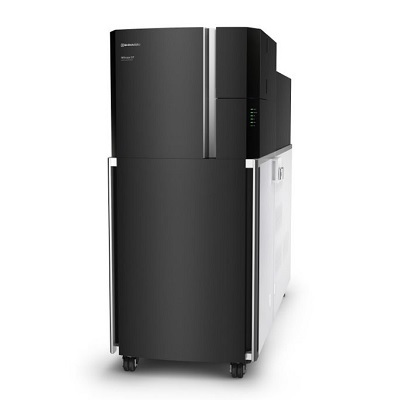
Inheriting the concept of a mass spectrometer equipped with an optical microscope from the iMScope series, the iMScope QT is also Shimadzu's flagship model for MS imaging with a LCMS QTOF.
The iMScope QT boasts not only fusion with morphology studies but also excellent speed, sensitivity, and spatial resolution, clearing the way to next-generation mass spectrometry imaging.
Mass spectrometry imaging is performed in three steps: pretreatment, data acquisition, and data analysis.
At each step, the optimal approach accelerates research, while improving the reliability of the results.
Inheriting the concept of a mass spectrometer equipped with an optical microscope from the iMScope series, the iMScope QT is also Shimadzu's flagship model for MS imaging with a LCMS QTOF.
The iMScope QT boasts not only fusion with morphology studies but also excellent speed, sensitivity, and spatial resolution, clearing the way to next-generation mass spectrometry imaging.
Mass spectrometry imaging is performed in three steps: pretreatment, data acquisition, and data analysis.
At each step, the optimal approach accelerates research, while improving the reliability of the results.
Mass measurement accuracy (MMA) is the key performance attribute underlying all application fields using high-resolution accurate-mass (HRAM) spectrometers. LCMS QTOF delivers the MMA needed for high-con dence identification of unknown compounds at an unprecedented level of stability. This is made possible by new technologies implemented in the Intelligent Temperature Control System and the UF-FlightTube that accurately offset the changes occurring to both internal and external environments. With LCMS QTOF, Shimadzu aims to totally refashion the HRAM user experience, enabling scientists to run more samples at longer calibration intervals with greater confidence and ease.
Shimadzu’s Intelligent Temperature Control System ensures stable MMA even in laboratory environments susceptible to temperature changes. To demonstrate, standards ranging from 150 to 1700 Da were analyzed continuously after a single calibration. Normal laboratory temperature fluctuation was observed between 25°C and 28°C.
Without additional mass correction, the measured accurate masses of all compounds remained within 1 ppm of the theoretical mass for the 60-hour duration of the experiment. With the LCMS QTOF, laboratory productivity can be increased by running long, calibration-free batches with confidence.